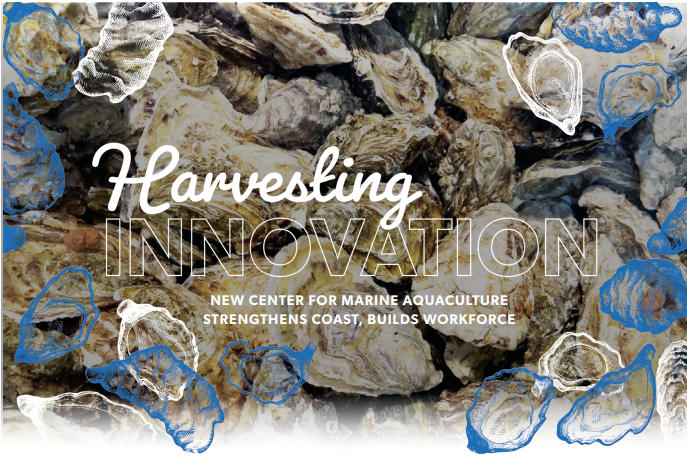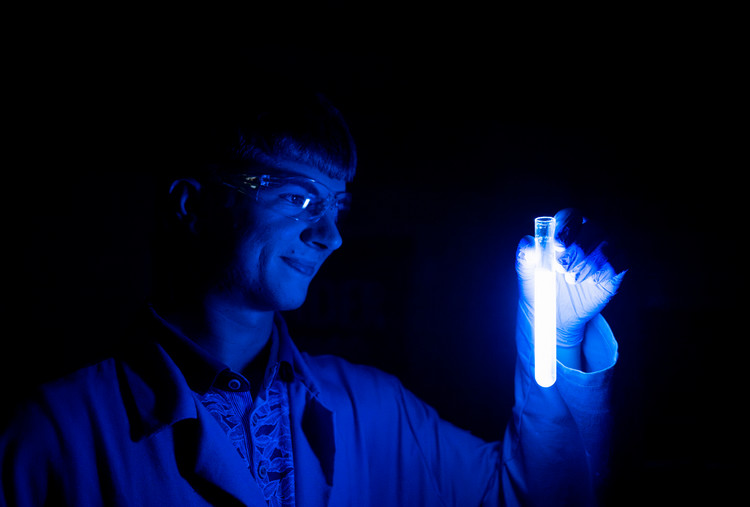Islander Marine Science Students Research Oso Bay During Annual Diurnal
CORPUS CHRISTI, Texas – Clad in wading boots, carrying green and white nets, and other scientific equipment, Islander students marched into Oso Bay to measured marine organisms in what was the first of six visits to the bay that day. It was all part of the yearly Diurnal, a 24-hour-long study of the organisms in the water.
For over 45 years, the Diurnal has been a mainstay of the marine science program at Texas A&M-Corpus Christi. Started by Dr. Henry Hildebrand, founder of the marine science program, and carried on by notable University personnel, such as the late Dr. Wes Tunnel, Harte Research Institute (HRI) co-founder, and Dr. David McKee, former Professor of Biology and Mariculture, the Diurnal has a long tradition at the Island University. This legacy is not lost on Dr. Jennifer Pollack, HRI Chair for Coastal Conservation & Restoration, Associate Professor of Marine Biology, and leader of the Diurnal for the last seven years.
“We’re standing on the shoulders of all the people who have done this in the past,” Pollack said. “I think that is something that we recognize and try to honor. This is a part of a storied history and we’re trying to make our mark to the end of that list while recognizing those who came before us.”
On this chilly Valentine’s Day morning, undergraduate marine ecology science students gathered along the banks of Oso Bay, just down from the Island campus, near the bridge to the Naval Air Station, to spend 24 hours communally eating, sleeping, and researching. Every four hours, students used plankton nets, assessed water quality, and identified and collected various fish, shrimp, and benthic organisms. They then brought these organisms to the lab to examine and identify under a microscope. Afterward, all these species were returned to the bay.
“I think that it’s an amazing opportunity for us undergrads,” said Joe Kuntz, marine biology student, and first-time participant in the Diurnal. “Not a lot of classes would be able to give us the experience of doing research like this and being able to work with graduate students, post graduates, and other professors.”
Undergraduate students were joined by graduate and doctoral students who have participated in the program in the past.
“This is a perfect mentoring opportunity to get teaching experience and help out with this important research,” said Alyssa Outhwaite, Ph.D. student in the marine biology program. “Supporting and showing students these different types of sampling techniques, how to ask the right questions, and how to engage with these environments, are all things that I hope to do with my future students.”
So, what did this year’s Diurnal turn up?
“Participants found many small annelid worms and small bivalves and gastropods. Nutrient levels were also quite high compared to previous years,” Pollack said. “These data have been compiled and submitted into a database, joining years of previous research. Students will use this information to write lab reports where they will analyze data, report trends and significant findings, and compare their results to those of previous years.”
Though this information is being recorded in a collegiate setting, the implications of the work reach further than the Island University.
“It's important to keep your finger on the pulse of Oso Bay and maintain a historical record of what's happening here,” Pollack said. “We can communicate this information to resource managers, policy makers, and other people who are making the decisions about how the system is managed.”
While the Diurnal information reaches high places, so do the participants of the program.
“Sometimes I'll mention this class to people in resource management, or federal agencies, and they’ll remember participating in it years ago,” Pollack said. “The Diurnal builds a network of people who've experienced this specific event … it’s a unique way for current and past Islanders to connect to each other.”






























































































